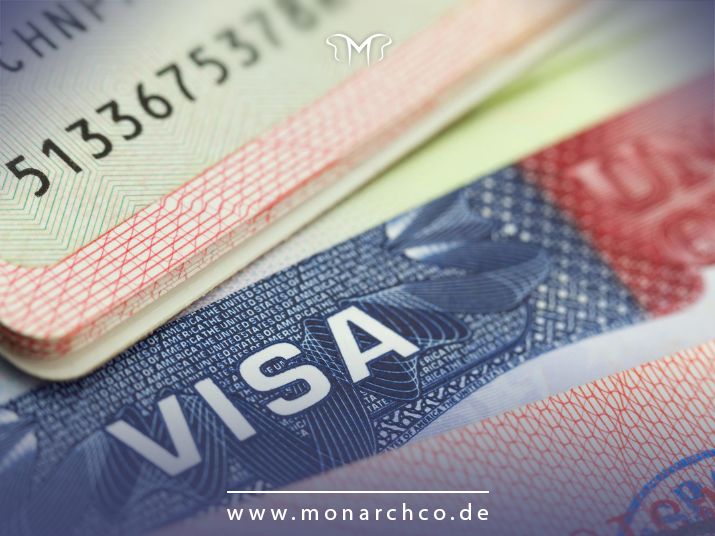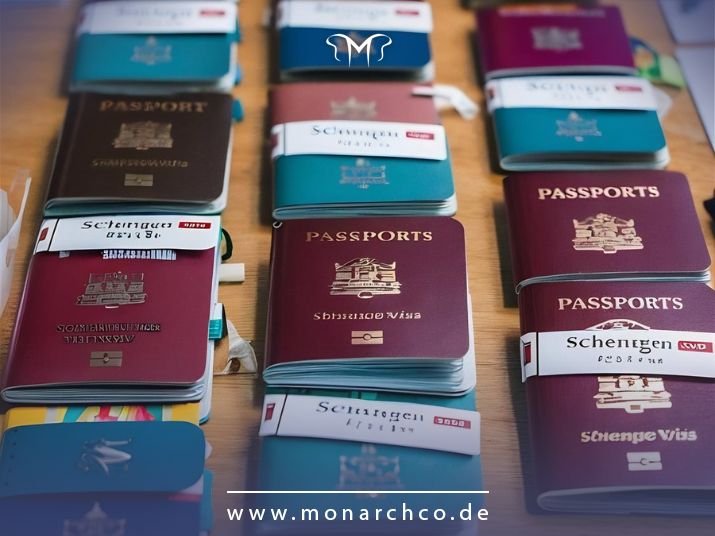
How Long is a Schengen Visa Valid For?
Traveling to Europe has always had its unique allure, and the Schengen visa is one of the most popular options for entering this region. This visa allows you to travel to all the countries within the Schengen area. Currently, 27 European countries have joined this agreement, establishing specific regulations for free movement and commercial transactions between these countries.
Among the most significant Schengen member countries are Switzerland, France, Italy, Germany, and Spain. By obtaining a Schengen visa from any of these countries, you can travel to all 27 member countries without needing a new visa. However, it is essential to adhere to the visa regulations, particularly its validity period.
According to the rules, Schengen visa holders are only allowed to stay in the Schengen area for 90 days within a 180-day period. It doesn't matter whether you plan to stay in one country or visit multiple countries; you are collectively permitted to stay for 90 days.
Keep in mind that staying beyond the allowed duration can result in fines and issues such as a negative record on your file. The Schengen visa remains valid in 2024, allowing you to travel to member countries as long as the visa is valid.
Despite the relatively complex process of obtaining a Schengen visa, it remains one of the most sought-after visas globally due to the ability to travel to 27 countries and its growing popularity.
How Long Is the Schengen Visa Valid?
The validity period of the Schengen visa can be confusing for many applicants, leading to common errors in calculation. For example, if someone receives a Schengen visa on the first day of September, it might be valid until late February of the following year, approximately 180 days. However, it is important to note that during this period, you are only allowed to stay in the Schengen area for 90 days.
In other words, if your visa has a validity of 180 days, you can travel to Schengen countries within this period, but you can only spend 90 days in the area. If the code on your visa reads "1," it indicates that your visa is only valid for 15 days, and your stay should be limited to this duration.
Be aware that staying beyond the visa's validity can lead to fines and issues such as being blacklisted by Schengen embassies and having future applications denied.
The Difference Between the Validity Period and the Duration of Stay for a Schengen Visa
Visa Validity Period: This is the time during which your visa is valid, allowing you to travel to Schengen countries within this timeframe. For example, if your visa is valid from the beginning of September until late February, it means the visa is valid for 6 months. During this period, you can travel to the Schengen area whenever you wish.
Duration of Stay: This is the time you are legally allowed to stay in the Schengen area. Even if your visa is valid for 6 months, you may only be permitted to stay for 90 days within this period. For instance, with a 180-day visa, you can stay for 90 days during these 180 days in Schengen countries.
In summary, the visa validity period tells you when you can travel, while the duration of stay specifies how long you can remain in the area.

How Many Types of Schengen Visas Are There?
Schengen visas are issued in three types: single-entry, double-entry, and multiple-entry visas.
Single-Entry Visa
This type of visa allows you to enter the designated country only once, and after you exit, you cannot return to that country. This visa is marked with the number 1 in your passport and indicates in the "valid for" section which countries you can travel to. The validity of this visa is usually 15 days.
Double-Entry Visa
With this visa, you can enter Schengen countries twice. This means after entering one of the Schengen countries, you can return to your home country and then re-enter the Schengen area without needing a new visa.
Multiple-Entry Visa
A multiple-entry visa is issued for one, three, or five years. The holder of a Schengen multiple-entry visa can travel to Schengen countries as many times as they want and, after exiting, can return to Europe without needing a new visa. With this type of visa, the applicant can stay in Schengen countries for 90 days within a 180-day period.
What Factors Affect the Validity Period of a Schengen Visa?
The validity of a Schengen visa is influenced by several factors, including:
- Visa Type: The type of visa (single-entry, double-entry, or multiple-entry) affects the validity period. A single-entry visa is usually issued for short-term travel, while a multiple-entry visa can be issued for a longer period and allows multiple entries into the Schengen area.
- Requested Duration: The length of stay you mentioned in your application can influence the validity of the visa. Generally, the validity is set according to the duration requested.
- Purpose of Travel: The purpose of your travel (tourism, study, business, etc.) also impacts the validity period. For example, a student visa may be issued for the duration of your study program, while a tourist visa is typically issued for a shorter period.
- Travel History: Your previous travel history and prior Schengen visa applications can affect the validity of the visa. Those with a good travel and stay record may be granted a longer visa.
- Embassy and Consulate Policies: Each embassy or consulate may have its own policies for determining the visa validity period.
- Financial Status and Document Credibility: Your financial status and supporting documents, such as travel insurance and financial statements, can influence the validity of the visa. To secure a longer validity, you need to provide the necessary documentation and demonstrate sufficient financial resources.
Considering these factors can help you better understand the validity of your Schengen visa and how it may affect your future travel plans.

The 90/180-Day Rule for Schengen Visas
This rule states that you cannot stay in the Schengen area for more than 90 days within any 180-day period. Each time you enter the Schengen area, you must look back over the past 180 days and calculate how much time you have spent in the area. Then subtract this from 90 days to determine how much time you have left to stay.
For example, if you have spent 70 days in the Schengen area in the past 180 days (from today to six months ago), when you want to travel again now, you are only allowed to stay for another 20 days, as 90 days minus 70 days equals 20 days.
Extending the Validity of a Schengen Visa
Extending the validity of a Schengen visa is possible, but it has limitations. Here are the key points for extending a Schengen visa:
- Justifiable Reasons for Extension: To request an extension, you must provide valid reasons for needing to extend your stay. These reasons may include medical issues, emergencies, or unforeseen circumstances.
- Requesting Extension Before Expiration: The extension request must be made before your current visa expires. Typically, you need to submit your request at one of the relevant offices in Schengen countries.
- Required Documentation: To request an extension, you need to provide new documentation that supports your reasons for extending your stay. This may include medical reports, emergency-related documents, or financial statements for a longer stay.
- Duration of Extension: The length of the extension depends on your specific circumstances and the decision of the relevant authorities. Typically, the extension is granted for a shorter period than the original visa.
- Limitations and Conditions: Even if you submit an extension request, there is no guarantee of approval. Additionally, the extension cannot allow you to stay for more than 90 days within any 180-day period in the Schengen area.
Overall, to extend your Schengen visa, you must present strong and documented reasons and plan ahead for the application.


